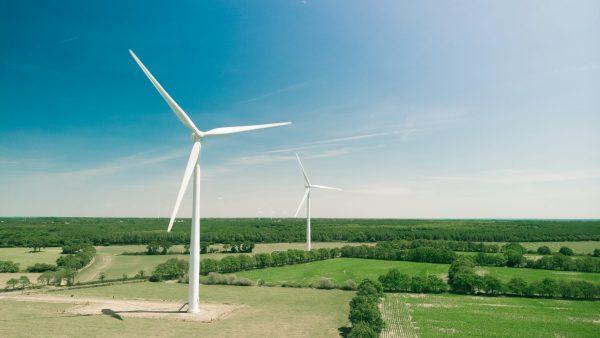India’s energy transition is underway, but key barriers continue to hold back widespread adoption among commercial and industrial (C&I) businesses. Despite being responsible for a significant share of the country’s power demand, C&I businesses consume only about 12% of India’s renewable energy. This imbalance is not due to a lack of capacity or capital, but rather the absence of equitable access to both renewable power and the financing needed to procure it.
This disconnect is most apparent at the mid and lower tiers of the commercial & industrial pyramid. Large corporates are often able to secure green power through well-established mechanisms. In contrast, smaller businesses face a fragmented, slow, and often opaque decision-making process. Many still rely on carbon credits or RECs to meet sustainability targets. These solutions offer marginal benefit and do not materially shift how energy is sourced.
Policy has opened the door, but adoption is still uneven
India introduced the Green Open Access regulations in 2022 to reduce the minimum threshold for bilateral power purchase agreements from 1 MW to 100 kW. This was expected to unlock access to RE for a broader set of businesses. But the rollout has been state-led and inconsistent.
Maharashtra, one of the last major states to implement the regulations, only incorporated the framework in late 2023. Even in states where the policy is in place, translating regulation into real transactions has proved complex, especially for businesses with multiple factory sites or smaller consumption profiles. Grouping demand across sites and structuring power deals around varied risk profiles remains difficult.
Energy infrastructure is expanding, but geography and policy friction persist
India has around 470 GW of installed power capacity, with plans to double that by 2030 to meet climate targets. But the distribution of capacity remains uneven. Power remains stable only in clusters, limiting participation for businesses outside those zones. New technologies like biomass or grid-connected rooftop solar — require a robust and distributed grid to deliver value across rural or semi-urban locations.
Land acquisition, No Objection Certificates (NOCs), and local approvals continue to slow asset creation. Even when developers are ready to build, the underlying permissions ecosystem delays progress. This not only limits the pace of RE deployment but also disincentivises private capital from entering smaller or riskier geographies.
Capital is available — but inaccessible to many
Several large-scale concessional and blended capital programs exist to support RE adoption. But access remains limited. For instance, the World Bank and SBI set up a ₹600 crore rooftop solar line. Over eight years, only about ₹500 crore has been deployed, leaving nearly 20% of the funds unused. Institutional capital often remains stuck due to rigid underwriting requirements and a lack of risk appetite for small-ticket or non-standard deals.
Many businesses only engage with their existing bank, often a large public-sector lender. If denied, they assume financing is not an option. The financial literacy gap, combined with risk aversion from lenders, shuts down viable projects before they begin.
The real issue is fragmentation and information asymmetry
Information asymmetry is deeply embedded in India’s energy markets. Two developers quoting different prices for the same project is not unusual. Asset owners, intermediaries, and buyers operate in silos. Many companies begin conversations with consultants or brokers, but drop off after months of inaction and unclear pricing.
Project pricing is often not shared unless requested multiple times. This behaviour benefits those in control of the information, but slows down market growth and erodes trust. A more open, transparent system would reduce delays and increase adoption. Buyers need to know what they’re paying for, and sellers need confidence that the demand is real.
Even when capital flows, deal structuring is complex
Smaller or financially stressed businesses require creative financing models. In one case, a furniture manufacturer in Gujarat needed a rooftop solar system of around 1 MW but had been rejected multiple times due to its leveraged balance sheet. The financing was eventually structured through an NBFC, using equipment as collateral rather than cash or property, a setup many traditional banks would not have supported.
Deals like these require customised underwriting, knowledge of the RE space, and the ability to match capital with the right risk profile. They are difficult to scale through templated models, but remain essential if India is to meet its clean energy goals.
There’s a need to decouple energy adoption from asset ownership
Most RE platforms in India either focus on owning energy assets or operating as intermediaries. Asset-light models are often seen as limiting, but ownership comes with regulatory complexity and long build timelines. Given the difficulty of setting up new assets, especially in states with slower policy execution, a hybrid approach may be more pragmatic. Partners with ready, high-quality assets can serve demand faster than greenfield development.
Energy transition should be seen as a multi-stakeholder effort
The energy transition involves developers, customers, financiers, and regulators. Each plays a role. Developers must balance capital recovery with long-term power supply commitments. Businesses need decision-making tools, product education, and confidence in their partners. Financiers require underwriting visibility and trust in asset quality. And regulators must ensure policies translate into action on the ground.
Even when the right pieces are in place, the system often fails to move fast enough. Energy deals can take 6–12 months to close. Businesses lose momentum, projects get deprioritised, and the impact stalls.
Building energy equity requires staying power
Energy use per capita in India remains low compared to countries like China. That number must rise not just in volume, but in quality and sustainability. Making that happen will require patient capital, transparent markets, and platforms that reduce friction at every stage of the process.
The opportunity is real. The need is urgent. But without better access to capital, clearer regulation, and fewer intermediaries, many businesses will continue to sit on the sidelines of the transition.



